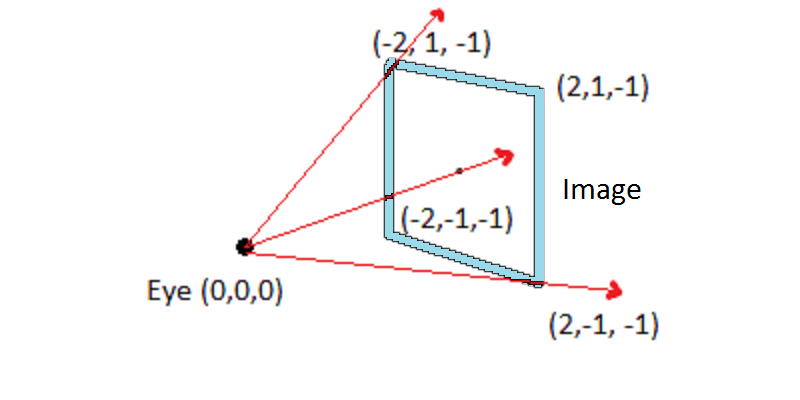Alright, ready for the third installment of this ray tracing series? This time, we'll get some actual rays, and start tracing them through a scene. Our scene is still going to be empty, but we're starting to get somewhere. Although the book I'm working from is titled Ray Tracing in One Weekend, it's starting to look like my project is going to be more like Ray Tracing in One Year...
Once again, I'm going to put all of the relevant new code for this segment up here, but if you want to see the bits I've missed, check out my GitHub project. We will be circling back to the Vector3 structure I created last time, since I inevitably left out some useful operations...
The core of what a ray tracer does is to trace rays from an origin, often called the eye, for obvious reasons, through each pixel in the image, and then out into our scene to whatever objects lie beyond. We don't have any objects to actually hit, yet, but we are going to lay the groundwork to start doing that next time. Below, you can see the setup of our eye, the image plane, and the rays that shoot from the eye through the image and into the scene beyond.
